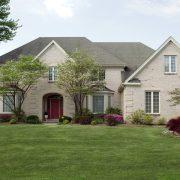Applying Stucco on Concrete or Masonry
Prepare the surface of the wall. You can apply stucco directly on rigid and solid surfaces, but only if the surface is more or less rough and absorbent. If the wall does not absorb even a little water, or if there is surface contamination, wash the surface evenly. If the wall is covered with paint or sealer, or if it is too soft to withstand the stucco, try some of the following methods.
- Acid etching
- Sandblasting
- Roughing machine (for unpainted and smooth surfaces).
- Apply an adhesive agent, consult the specific instructions of the product. Do not use over water-soluble paint.
- If you have doubts about whether the wall will support the stucco, follow the instructions in the section of the stucco wall, add the metal strip and apply plaster on top.
Moisturize the surface. Moisten the wall just before applying the first coat or plaster, preferably with a sprayer. This improves adhesion and reduces the amount of water that the wall absorbs from the plaster, preventing it from drying out prematurely. The surface should be wet, but not soaked.
- Delay work if in the following week the temperature will be cold, warm (above 32 ° C / 90 ° F) or have strong winds. These conditions will interfere with the drying process.
Mix the scratch layer. This should be 1-part cement (with lime) and 2¼ to 4 parts sand. Plastic cement, premixed with lime, is usually easier to mix and work with. Combine it with gypsum sand from a dry material.
- Just add the water needed to spread the plaster, otherwise the wall could fall or fall apart.
Apply and mark the scratch layer. Spread on a ¼ inch (6.4 mm) thick layer. Mark the surface with horizontal lines using a palette with slots and keep the tool perpendicular to the wall. These grooves will allow adhesion of the next layer on the surface.
- The etching surfaces (among others) cannot be rough enough for good adhesion by this method. Instead, hit the scratch coat with a gunner, or shake it with a fiber brush or swab. This releases the air to create a more resistant adhesion.
- Some builders combine the striped layer and the brown layer into a single base layer. If you choose to do so, plan a total thickness stucco approximately 3/8 inch (9.5 mm) for concrete, and ½ inch (13 mm) for masonry. Leave a thickness of about ¼ inch (6.4 mm) for the final coat.
Apply the brown coat after a few hours. With modern cement on a rigid surface, there is no need to wait for the scratch coat to dry completely. For good adhesion, spread over the second “brown” layer as soon as the scratch coat is rigid enough to resist cracking, usually after four or five hours. Soften this surface until it is level and ¼ inch (6.4 mm) thick.
- The mixture of the brown layer must contain 1 part of cement and 3 to 5 parts of sand.
- It may be useful to compact this layer by softening it with a splint.
Preserve the moisture of the brown layer while it dries. During the next 48 hours, it is important to maintain the stucco humidity. If the relative humidity of the air is below 70%, you will have to spray or moisten the surface once or twice a day. Wait at least seven days for the brown coat to dry, moisten it periodically if it begins to dry prematurely. Some organizations recommend 10 or even 21 days for drying for greater resistance to cracking.
- In extremely hot conditions or with strong winds, place a windshield or umbrella over the area. You may even need to cover the surface dampened with polyethylene.
Apply the last layer. The last decorative layer contains 1 part of cement and 1½ to 3 parts of sand. Optionally, it can include a pigment and color. Soften it into a thin layer about 1/8 inch (3 mm) thick. Let it dry completely before painting (if desired), follow the same moisture drying instructions described above if the weather is warm.
Tips
While stuccoing a house, work on the back and sides before starting with the front. It will allow you to improve your technique before working on the walls of the facade that faces the street.
Things you will need
- plywood
- galvanized nails
- nail gun
- construction paper
- mesh ribbon
- nails with coating
- hammer
- adhesive agent (optional)
- large bucket
- masonry cement
- Portland cement
- medium grain sand
- pigment (optional)
- palette
- Stucco spray (optional, but necessary to save time)






